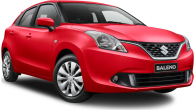Hyundai paved the way for the other Korean carmakers to enter the Australian market and it remains the leader of the Korean pack. It wasn’t without its problems in the early days, but has evolved into a respected make that has earned its stripes in the Australian motoring landscape.
The Accent resides in the period in which Hyundai was moving from a maker of cheap and cheerful cars with questionable quality and reliability to a producer of refined, durable cars as it is today.
MODEL WATCH
The Accent was the replacement for the Excel, the small Hyundai that is perhaps best remembered for the chassis problem it suffered when someone forgot to weld the front end, but is generally well regarded by those who bought them and drove them for many, many thousands of kilometres and found them to be most reliable.
Compared to the Excel the Accent was longer, wider and heavier, and rode on a longer wheelbase, but the interior and boot space was little different. That said Hyundai claimed that the head, leg and hiproom were improved.
The styling was freshened with the Excel’s soft rounded curves replaced by sharper lines that were more attractive for the time.
Hyundai offered three body styles in the range, consisting of a three-door hatch, a five-door hatch and a four-door sedan. The model range included the base GL sedan and three and five-door hatches that opened the range, the GS three-door hatch and the GLS five-door hatch.
The Accent’s engine was a 1.5-litre double overhead camshaft four-cylinder engine of its own making. Peak power was 76 kW at 5800 revs and torque was133 Nm at 3000 revs.
The Accent was no fireball, but it had sufficient get up and go to satisfy most owners.
Buyers could choose between a five-speed manual gearbox and a four-speed auto, both of which got the job done without much fuss, and final drive was through the front wheels.
There was little to complain about with the Accent, but equally there was little to inspire. It was adequate rather than exciting, doing everything acceptably well if your priority was A to B transport.
The model range opened with the GL, which was available in sedan and three and five-door hatch body styles, and came with power steering, immobilizer, digital clock, four-speaker AM/FM radio cassette sound, intermittent wipers and 60/40 split-fold rear seat.
If you stepped up to the GS three-door hatch you also got a power antenna and power windows, a rear spoiler with high-mount stoplight, central locking, and leather-wrapped steering wheel and gear knob.
Further up the chain was the GLS, which could be had in sedan or five-door hatch styles, and came with power mirrors, air, and front fog lamps.
IN THE SHOP
Like the Excel the Accent was fundamentally sound, with durable engines, gearboxes and drivelines, but was often plagued by little things that could sour the experience.
The engine has a cam timing belt so make sure it has been replaced as per the service schedule and not ignored by an uncaring or cash-strapped owner as can happen. Other than that make sure it has had regular oil changes.
Ensure the auto transmission shifts smoothly and doesn’t stick in gear. If it sticks in third the pulse generator probably needs replacing.
If there’s an issue with early Hyundais it’s in the peripheral systems and components, like the electrical system and associated bits and pieces. Wiring harnesses tended to be too tight, the wires often too short, and there were lots of reports of poor connections. Corroded connections were often reported to dealers.
IN A CRASH
All models had a driver’s airbag and seat belt pretensioners for basic safety protection.
ABS anti-lock brakes were an option and are worth having.
AT THE PUMP
The Accent is quite a fuel miser and you could expect to see 7.0-8.0 L/100 km around town and 6.0-6.5 L/100 km on the open road.
OWNERS SAY
Merle Stomps doesn’t want to update her 2000 Accent simply because she doesn’t think she can buy a car that will give her as good a run as her Hyundai. She says it does 7.0 L/100 km, has good performance, and has been a pleasure to drive in the 240,000 km she has done in the seven years she’s owned it. During the warranty she had the clock and both side mirrors replaced, and there was a wiring problem with the air-conditioning, while she spent $300 on an ignition problem after the warranty expired.
LOOK FOR
• Robust and reliable engines
• Modest performance
• Good fuel economy
• Reasonably roomy
• Troublesome electrical system
THE BOTTOM LINE
Solid, generally reliable basic transport as long as you don’t want a thrilling drive.
RATING
60/100
Hyundai Accent 2000: GL
| Engine Type | Inline 4, 1.5L |
|---|---|
| Fuel Type | Unleaded Petrol |
| Fuel Efficiency | 7.8L/100km (combined) |
| Seating | 5 |
| Price From | $2,040 - $3,190 |









































.jpg)

.jpg)





































.jpg)

